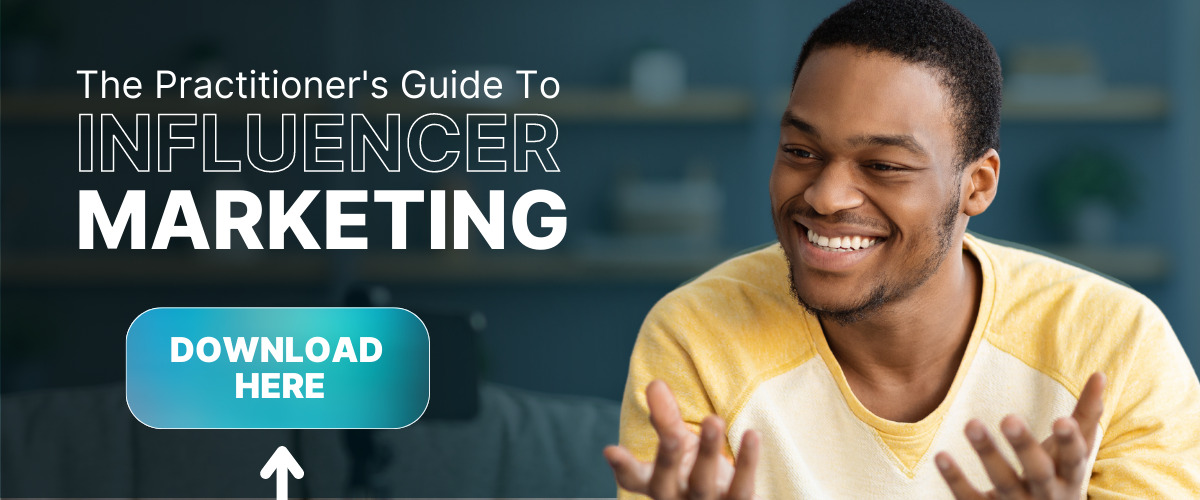It’s hard to overestimate the power of a strong influencer endorsement. Trusted creators are powerhouses for building brand equity in a non-invasive way.
They make word of mouth marketing scalable and efficient, when done well. However, many brands fail to reap the full benefits creators can offer.
Why?
- Influencer marketing is often siloed or disjointed from overall business objectives and media strategy.
- Content performance can be difficult to quantitatively measure.
- And, with seemingly unlimited choices, it can be hard to identify the best influencers for your brand.
But with the right building blocks,you can overcome these challenges. Here are our top five influencer marketing tips we apply to maximize our clients’ investments at Coegi.
5 Essential Influencer Marketing Tips
1. Align influencer selection with business goals
First, define the business objective. What are you hoping to achieve with influencer marketing? Do you want to generate mass reach? Build market share within a specific niche? Or, are conversions, sales or leads the desired outcome?
After defining the goals, you can determine the mix of creators necessary to achieve those objectives:
- Mega influencers (1M+ followers): Ideal for driving mass awareness through celebrities or other large personalities.
- Macro Influencers (<1M followers): Reach engaged followerships in a more authentic way than mega.
- Micro influencers (<50K followers): Ideal for driving consideration and conversions from more curated, but scalable, audiences.
- Nano influencers (<10K followers): Ideal for building brand community through long-term partnerships and driving action within niche interest segments.
Remember – bigger following does not always equal better results. Higher follower counts and millions of impressions comes a higher price tag and a less precise audience. Timing is another consideration, as larger-scale creators often have longer lead times due to heavier editorial calendars.
Learn more on how to choose the best influencers for your brand from one of Coegi’s account supervisors and influencer marketing connoisseur, Natalie Carson:
How to Choose the Best Influencer for Your Brand
2. Find influencers that resonate with your brand style
Selecting the right size of creator for your goals and budget is important. But, finding the perfect creator match goes beyond surface-level numbers.
- Does your brand tone match the influencer’s personal brand voice?
- Is your product or service offering aligned with their follower interests?
- Does their content style and visual aesthetic complement your brand image?
Finding creators that already fit your general brand standards will make the partnership process more streamlined and the content creation more genuine.
But the real magic happens when a creator becomes an ambassador who truly knows and advocates for your brand over months or even years. You can nurture these relationships through evergreen discount codes and affiliate links, which will incentivize the creator while helping you track actions taken by their followers.
3. Prioritize creators with strong follower communities
Users are becoming more perceptive to blatant advertising and ingenuine messaging. Take stock of how strong the creator’s rapport is with their followers. Do they truly influence their audience? This is especially important when attempting to reach Gen-Z consumers, who are hyper aware of sponsored content.
Smaller creators tend to drive higher conversion rates due to having greater trust and engagement with their followers. Regardless of size, creators that organically align with your brand and are true advocates (ie. they actually use your product!) will be much more likely to influence purchase decisions.
Lastly, be sure to thoroughly vet creators and avoid those with significant amounts of bot traffic or paid-for followers. These can inflate engagement and follower numbers but are useless for building your brand.
4. Don’t treat influencer marketing as an “add on” to your media strategy
Influencer should be woven into a holistic marketing strategy, not treated as a separate tactic or handled by a random third-party. Consolidating your paid media and influencer marketing within one digital media agency offers three core benefits:
- Measurement and Accountability – By integrating influencer with digital media, you can measure influencer campaign success using the same performance lens as other channels.
- Cross-Channel Budget Fluidity – Centralization empowers marketers to move budget with agility where performance indicates – whether across channels or within creative rotations. For instance, through smart contract negotiation, a viral influencer post can be turned into a paid campaign from the creator’s handle or amplified by the brand.
- Seamless Audience Targeting – Media agencies can upload first-party data segments used across other channels to understand which influencers your audience already engages with and synchronize targeting to reduce media waste.
Sharing cross-channel learnings and insights will make the overall media ecosystem stronger and allow for a more holistic, data-driven approach.
5. Let your creators create
Good creators are storytellers and social media experts. They have their thumb on the pulse of social media trends. They understand the algorithms. And they know how to communicate with their audiences.
90% of consumers view micro influencers as credible, believable & knowledgeable.
Empower these partners to have an authentic voice when speaking on behalf of your brand – not a scripted actor. We’ve all sat through cringeworthy scripted ad reads on YouTube and raised eyebrows at ill-fitting product endorsements on Instagram or TikTok. And I’m betting you didn’t end up using those particular affiliate codes.
You will see stronger results if you allow creators to communicate with their followers in a way that comes naturally. Simply let them create content, not ads. You can’t build brand authenticity without allowing your creators to be authentic with their audiences.
View our Practitioner’s Guide to Influencer Marketing for more tips plus a step-by-step process on how to launch an effective influencer marketing strategy.





